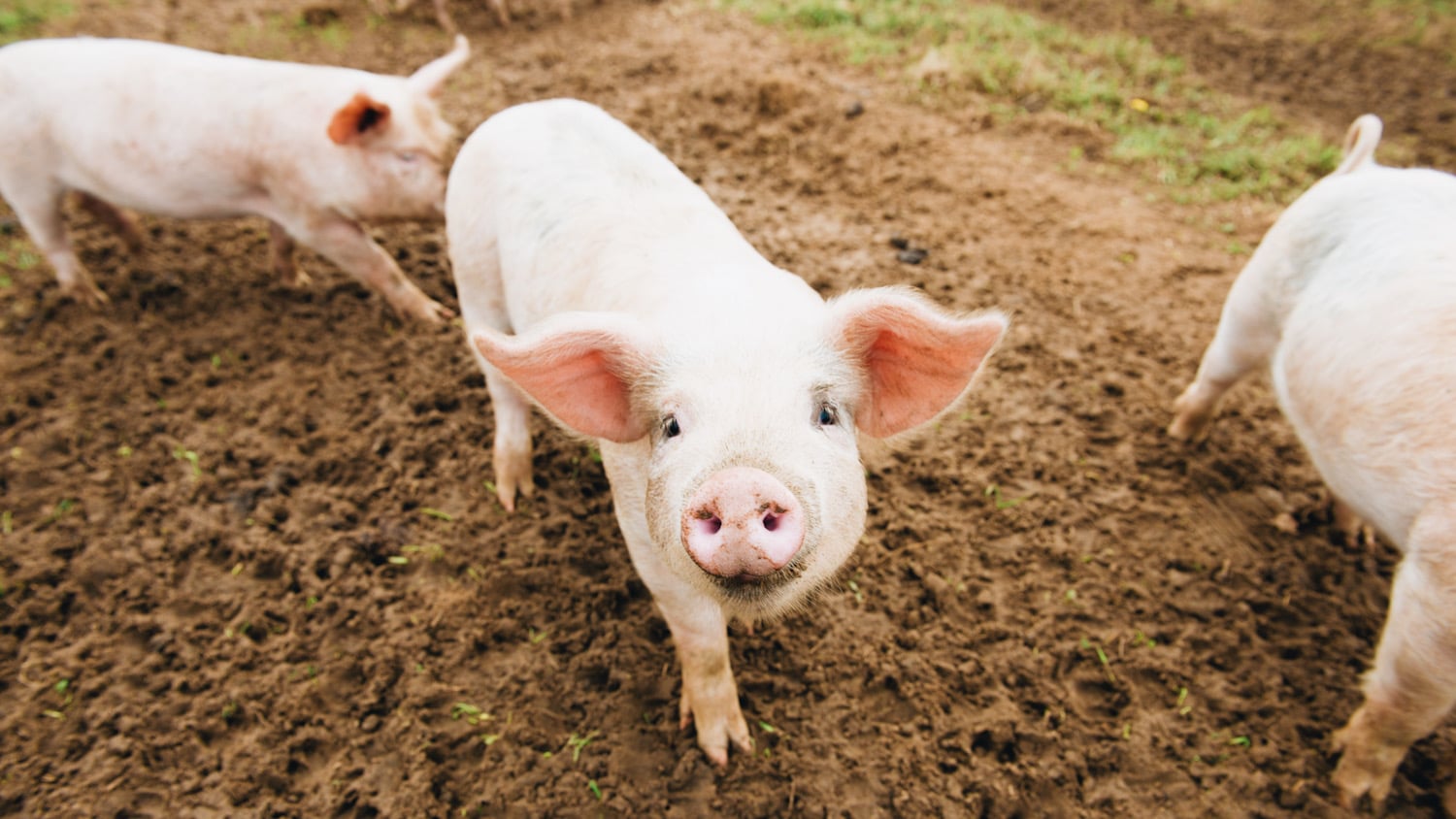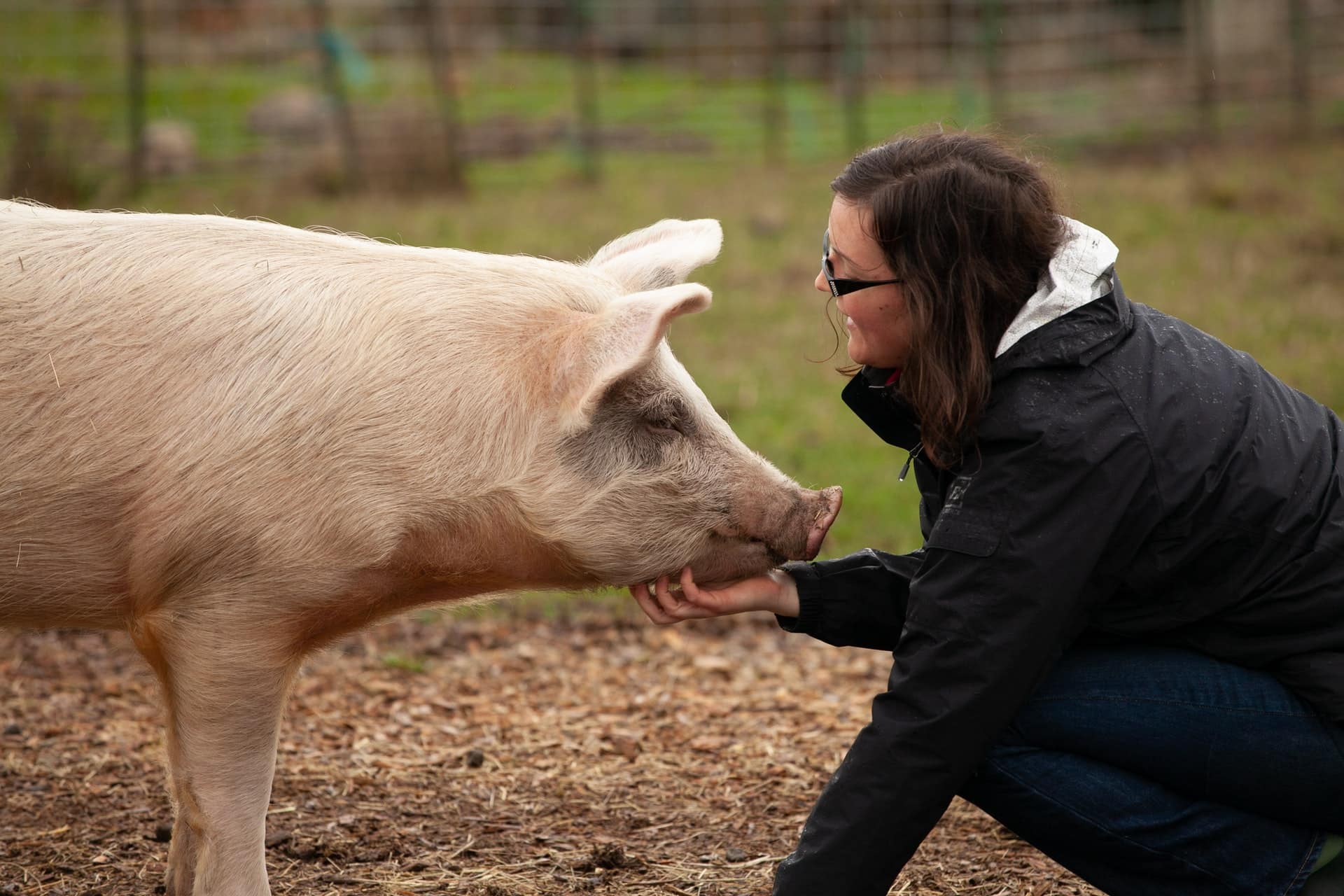Pigs do not have a good reputation when we talk about animals. But contrary to popular belief, pigs are brilliant and highly social animals.
Little is known about pigs because of the widespread obsession with cats and dogs. These are some of the most expressive animals and can communicate better than cats and dogs.
If you do not know such facts already, don’t worry; this post will answer all your questions.
How do pigs communicate among themselves? Is it different from the way pigs try to communicate with humans?
Without further delay, let us find fun facts about pigs communicating!
Ways in Which Pigs Communicate with Each Other
As mentioned earlier, pigs are intelligent and social beings. They form close relations with each other and communicate effectively.
What others perceive as a grunt or sound can be a pig trying to communicate various things. Let us take a closer look at their various ways of communication.
1. Grunting
The primary way of communication among pigs is vocal. Among the recognized sounds that pigs produce, the most commonly used vocal is the grunt.
A grunt can mean various things that pigs try to communicate to the members of their species and humans.
Grunts differ according to loudness and the duration for which the grunt lasted. For instance, a short grunt can be a sign of excitement.
On the other hand, a longer grunt can be a call to other community members.
2. Sounds Other Than Grunts
There is no rigid categorization of sounds alone to decide the mood of pigs. The body language and other cues are to be examined to say anything about the state of pigs.
Nevertheless, the following broad categorization will give you a hunch about pigs and their vocals other than grunts.
Squeal sound is produced by pigs when they are aroused or extremely happy.
The screaming sound produced by pigs is a sign of danger. Pigs may produce this sound when they get hurt. In addition to fear and pain, it can also be a sign of demanding something. The vocalization is very loud and prolonged.
Bark or the ‘arf’ vocalization is sharp and quick. The dominant members of the community may bark at the subordinate ones to threaten them.
3. Bodily Cues
Most animals do not have a variety of options regarding bodily gestures, but pigs are extremely expressive in that regard.
As mentioned above, vocalization alone can’t be examined to judge what pigs are trying to tell. There are certain bodily cues that they give.
For instance, as with dogs, wagging tails show happiness. Pigs also perform wagging tail gestures to show excitement, contentment, or happiness.
Charging, however, is a contrasting behavior trait compared to tail wagging. Charging is usually a sign of fear and aggression.
Hiding is a sign of fear as these are prey animals that can get easily terrified. Biting, on the other hand, is a sign of dominant behavior.
Snout kissing is a gesture of affection towards other members of their community.
Ways in Which Pigs Communicate with Humans
Pigs do not have a strong sense of sight. But nature always finds a way to compensate for the lack of abilities.
They have a strong sense of smell. Their snouts are their superpower. While communicating with humans, they may use their snouts and other gestures.
Let us examine some of the many gestures, affectionate behavior, and uncommon behavior performed by pigs while communicating with humans.
1. Licking/ Nibbling
Pigs opt for this behavior when they want to display affection towards one another or humans. This behavior is a sign of social bonding.
It is commonly seen between close social relationships such as family members or friends within a group.
Pigs may also lick themselves in stressful conditions to calm themselves.
2. Cuddling/ Sitting on Your Lap
This behavior can have two possible explanations. One, being the most obvious, pigs cuddle or sit on your lap to show affection.
The other possible explanation can be that the pig is scared and possibly seeking comfort in your lap.
3. Smiling
Along with the happy vocalizations mentioned above, pigs are capable of smiling. Don’t you think they look adorable while smiling?
Playfully rolling and smiling is a sign of excitement. Smiling is a sign of good social bonding between pigs or between pigs and humans.
4. Crying
Pigs can cry with actual tears and vocalization. Crying is the easiest way to communicate some underlying condition or sadness.
Check for cues in the surroundings that can cause distress for the pig. If you find anything, take measures to fix that.
If there is non-stop crying without any tangible threat or distress, chances are that the pig is suffering from some underlying medical condition.
5. Wall Licking/ Self Harm
Wall licking is not a common behavior. It is a common sign of sickness among pigs and many other animals, such as cattle.
It is understood if there is something on the wall that appeals to the pig. Then it can not be considered abnormal behaviour.
However, if your pig is constantly doing so, even without anything on the wall to lick, it is time to get a health checkup done.
Summing It Up
Pigs are one of the most expressive and effective communicators. Their communication skills are not limited to vocalization. They make abundant use of their bodies while expressing themselves.
Their primary vocalization is grunting, squealing, screaming, and barking. Each of the vocalizations indicates a different emotion, depending on the situation.
Tail wagging, smiling, rolling, and snout kissing are a few bodily cues that pigs give while communicating. Pigs also rely on their strong sense of smell as their vision is not that strong.
When interacting with humans, pigs exhibit affection through licking, sitting on the lap, cuddling, smiling, etc. Meanwhile, behaviors such as charging, endless wall-licking, and crying imply distress in pigs.
Look closely; you will understand almost everything a pig tries to communicate. Let us know which tip was most helpful in the comments!



